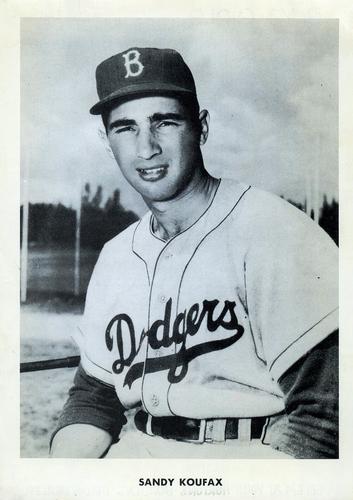There is likely something you take to–something that, for as long as you can remember, has always come naturally to you. As a child, when others around you struggled, you enjoyed doing it; it flowed like water down a mountain slope, easy, fast, and free. The something in question can be anything: tennis, a foreign language, algebra, memorization, dancing, singing, juggling, writing. But whatever it is, you always knew you had a natural bent toward it, a tilt, as if the skill in question were a star and you were a planet kept in orbit through its gravitational pull.

For Steve Dalkowski and Sandy Koufax, the talent in question was throwing a baseball. Indeed, it’s possible that someone could be a bodybuilder, the world’s strongest human, and still not be able to throw a ball inordinately hard. And then you get someone like Dalkowksi, an unremarkable five foot eleven and 175 pounds but who could, reportedly, throw a baseball as fast as 110 miles per hour. Koufax wasn’t quite as fast, but he was a contemporary of Dalkowski’s, and he threw plenty hard enough.

Both men were lefthanders, and, at least early in their careers, despite their obvious inborn natural gifts, they were not overly successful. Dalkowski, in fact, never was. He never made it to the Major Leagues. Blessed with that golden arm though he was (every batter who faced him maintained no one ever threw harder), he was fragile mentally, heaping enormous pressure onto himself before he took the mound. He also, how shall we say, enjoyed a good time and did not train with the vigor he might have. During his minor-league heyday, in the late 1950s and early 1960s, Dalkowski would essentially strike out, or walk, every batter he faced. In 1960, for instance, he both walked and struck out 262 batters in a single season. Statistics that would be unthinkable for anyone else.
Dalkowski never made it out of the minor leagues. He toiled away for nine seasons before flaming out, a footnote in baseball history despite being the fastest pitcher who ever lived. He had all the natural talent in the world. But talent, alone, wasn’t enough.
Meanwhile, Sandy Koufax began his career in much the same manner. Admittedly, Koufax was never as wild as Dalkowski–no one was. And he did make it to the Major Leagues at a young age and stuck around. But for the first handful of years of his career, Koufax was a mediocre pitcher–full of potential but not coming close to realizing it. Like Dalkowski, Koufax was a lefthanded flamethrower, but he was also blessed with an off-the-table curveball that, coupled with his fastball, made batters look silly. He had one major problem, though–he did not have pinpoint control. He would walk too many hitters and didn’t hit his spots consistently in the strike zone. As a result, for the first five years of his big-league career (1955-1960), Koufax was a forgettable player–just “a guy” as they say.

But he worked at it. He was determined to get it right, smooth out his form, take away the hitches in his delivery, and overcome his control issues. The hard work really started to pay off in 1961, when he won eighteen games and posted a 3.52 ERA. Not earth-shattering numbers, but he was on the right track. Then 1962 came along, and the countless hours he’d put in, perfecting his craft, would manifest in the best five-year stretch of any pitcher in baseball history. From 1962 until his forced early retirement in 1966 (Koufax had suffered massive arm injuries during his career), the lefthander was virtually untouchable, posting ERAs as low as 1.93 and 1.85, winning twenty-five or more games in three of those magical seasons, and striking out 382 overmatched hitters in 1965. “Trying to hit Sandy Koufax,” Pittsburgh Pirates great Willie Stargell once said at the peak of Koufax’s career, “is like trying to drink coffee with a fork.”

Two pitchers–both blessed with almost freakish talent–but only one of them “made it.” The difference? One honed his craft, worked endless hours, refused to accept mediocrity, and never relied on just his talent alone. If you are a writer, for example, maybe you have an innate sense of pacing, of language, of turning a phrase just so. Maybe people have said things to you like, “Wow. You are such a poet! The way you put words together. You make them sing.”
All may be true. But if you don’t take that gift and work with it, if you don’t master grammar and punctuation; if you don’t study story structure and learn how to “kill your darlings”: if you don’t strive to prune and pare down and remove pesky adjectives and adverbs and redundancies from the text, you will be the equivalent of the 100-mph pitcher who couldn’t throw strikes. Your talent will shine through, but it will be buried underneath too-wordy and sloppy prose. It will not be maximized, and your potential will not be reached.

So, whether you write or sing or play basketball, or pitch a baseball–put in the hours necessary to master your skill. Sweat the small stuff.
It can make all the difference.
Just ask Steve Dalkowski and Sandy Koufax–and the batters they faced.

Thanks so much for reading!
–Mike




























